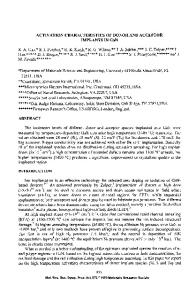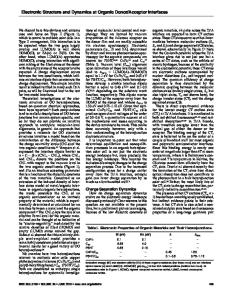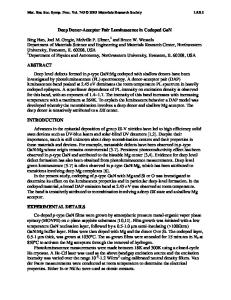Distribution of Hydrogen- and Vacancy-Related Donor and Acceptor States in Helium-Implanted and Plasma-Hydrogenated Floa
- PDF / 111,472 Bytes
- 6 Pages / 612 x 792 pts (letter) Page_size
- 82 Downloads / 243 Views
1195-B11-02
Distribution of Hydrogen- and Vacancy-Related Donor and Acceptor States in Helium-Implanted and Plasma-Hydrogenated Float-Zone Silicon R. Job 1), F.-J. Niedernostheide 2), H.-J. Schulze 2), H. Schulze 3) 1)
University of Hagen, Dept. of Mathematics & Computer Science, D-58084 Hagen, Germany Infineon Technologies AG, D-81726 Munich, Germany 3) Infineon Technologies Austria AG, A-9500 Villach, Austria 2)
ABSTRACT The formation and evolution of hydrogen- and vacancy-related donor and acceptor states were studied in helium-implanted and subsequently hydrogen plasma-treated n-type Float-Zone (FZ) silicon wafers by means of two-point-probe Spreading Resistance (SR) measurements. He+implantation was executed at 3.75 MeV and 11 MeV at fluences of 1×1014 cm-2. Post-implantation 13.56-MHz RF-plasma hydrogenations were carried out at 150 W either for 15 min or 1 hour, applying substrate temperatures between 350 °C and 500 °C. Enhanced donor concentrations as well as acceptor-like states were observed in the subsurface layers of the treated FZ Si samples after 15-min post-implantation H-plasma exposures. Under appropriate process conditions, the latter ones compensated for the n-type doping, so that even buried p-type layers were created. The experimental results indicated that oxygen played a central role in the formation of the acceptor-like states. INTRODUCTION Irradiation with light ions – H+, He+ – is widely used for the modification of various semiconductor properties under well controlled conditions [1]. Hence, light-ion implantation is a powerful tool in semiconductor device technology for device optimization; this is true in particular for silicon devices. Usually, implanted H+ or He+ can penetrate Si wafers to between about 100 nm and 1 mm, spanning a depth of four orders of magnitude. Therefore, substrate modifications by light-ion implantation can follow rather deep profiles if desired. Furthermore, at moderate temperatures up to 500 °C, hydrogen-plasma treatments can cause n-type doping in Si wafers under appropriate conditions. Such doping mechanisms can be attributed to hydrogen-supported thermal-donor formation – the so-called classical oxygen donors – or to hydrogen-related shallow donor complexes [2-5]. With this background, we have been interested in two-step processes based on H+- or He+-implantations and successive hydrogen-plasma treatments. We employed ntype FZ Si – the standard substrate material for power-device applications – for our investigations. Subsurface layer modifications down to quite deep wafer regions via the tailoring of doping profiles by light-ion implantation and subsequent hydrogen-plasma exposure could be a promising technological approach for power devices [6-8]. In the case of H+-implantation, we observed that in the wafers’ subsurface regions down to the projected depth range of the implanted H+-ions, surplus n-type doping occurred after 15-min H-plasma exposure at temperatures between 350 °C and 500 °C. These donor states were attributed to hydrogenated vacancy defec
Data Loading...









